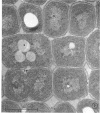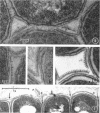Abstract
Pangborn, Jack (University of California, Davis), and Mortimer P. Starr. Ultrastructure of Lampropedia hyalina. J. Bacteriol. 91:2025–2030. 1966.—In an effort to learn more about the structural bases for the sheeting format of Lampropedia hyalina, ultrathin sections were cut which were precisely oriented either parallel to or perpendicular to the plane of growth; these were examined by electron microscopy. Lampropedia cells show cytological features typical of gram-negative bacteria. In addition, three uniquely structured layers are found exterior to the cell walls. Details are presented regarding the fine structures and geometric relationships of these layers; their probable origins and involvements in the characteristic cellular juxtaposition are discussed.
Full text
PDF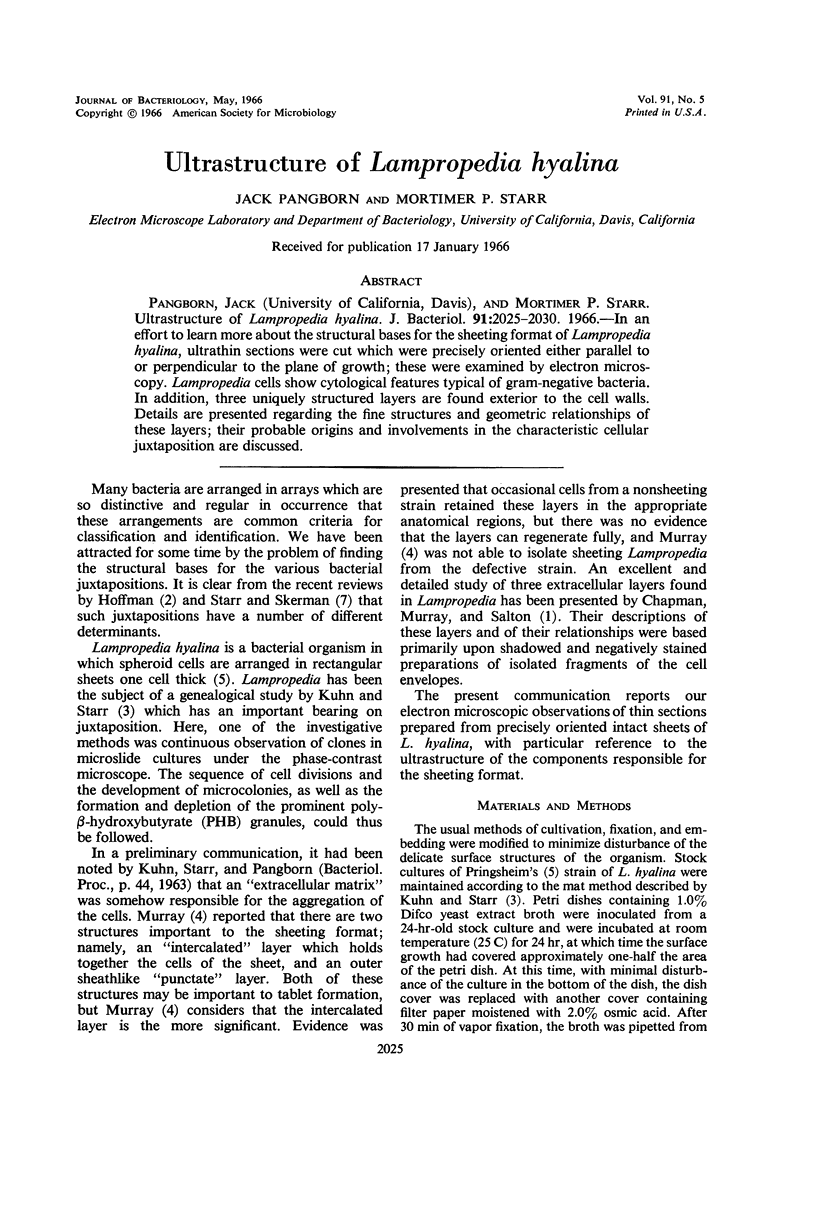
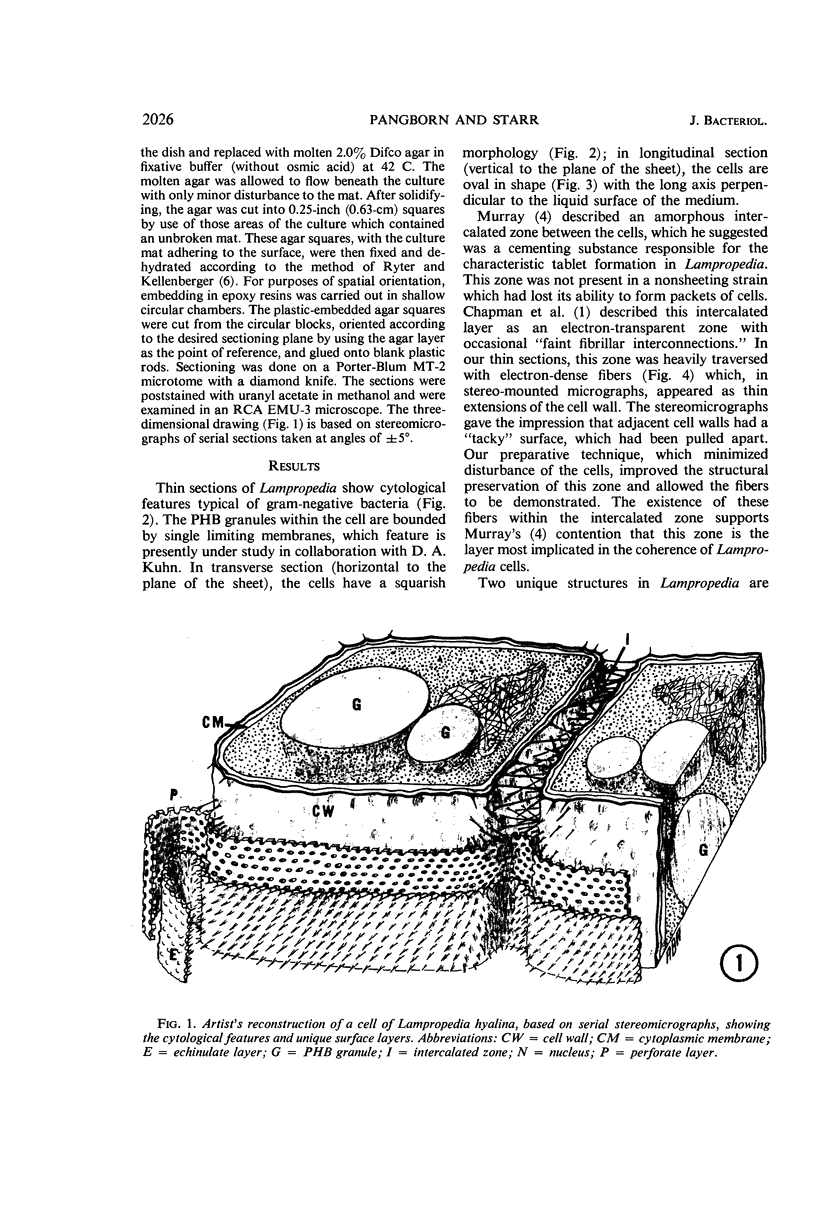
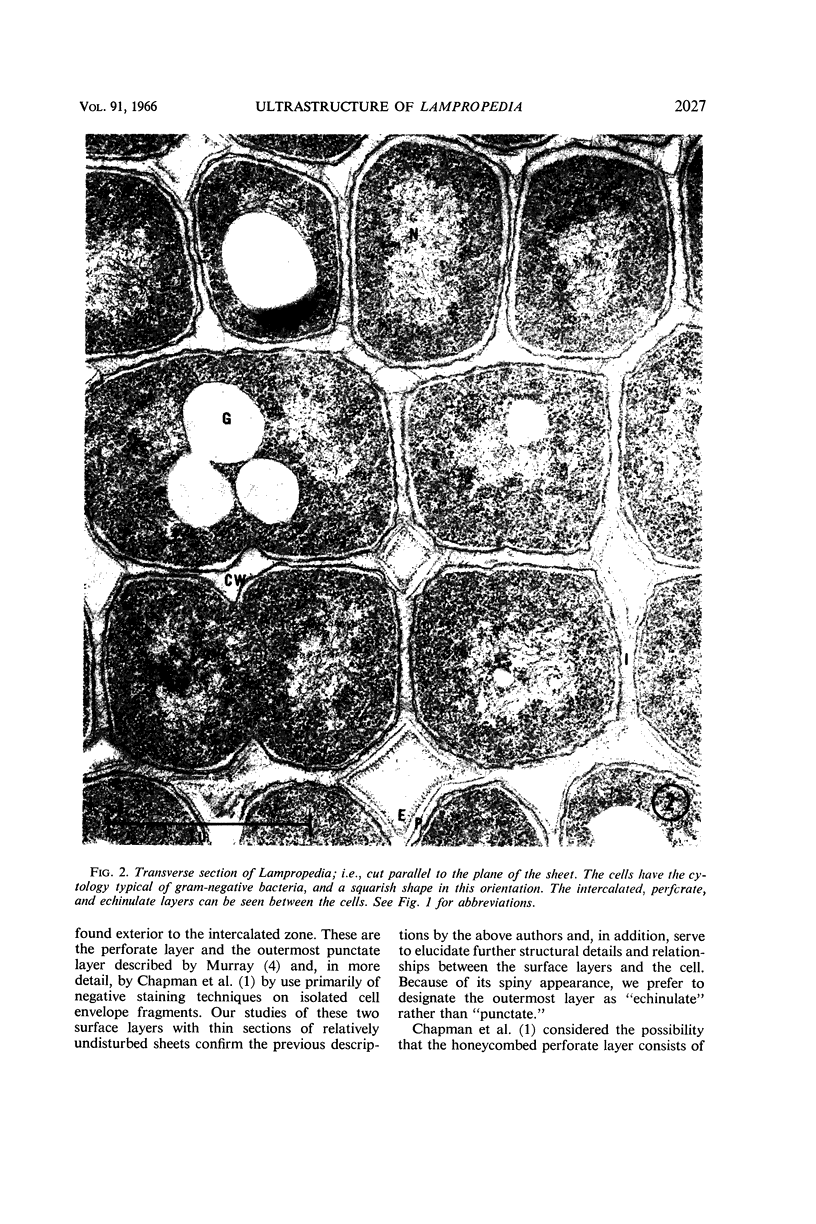
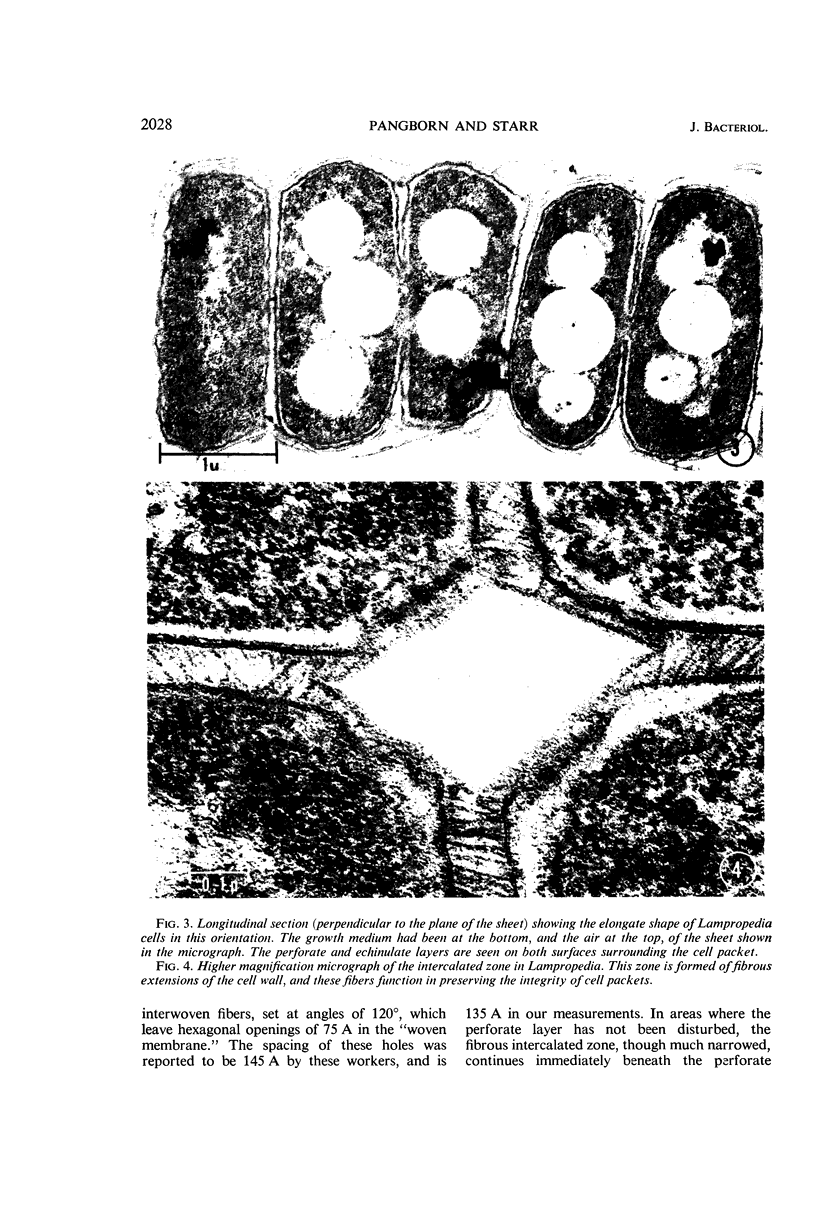
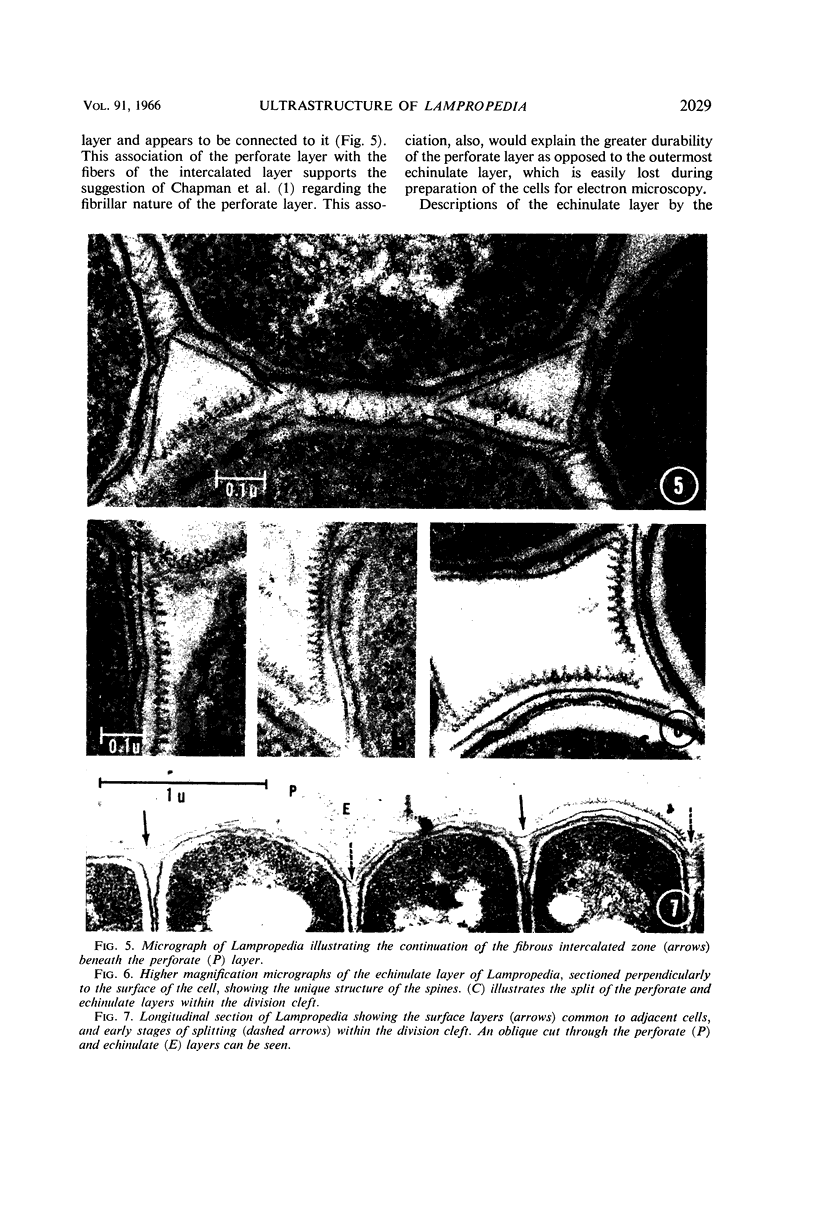
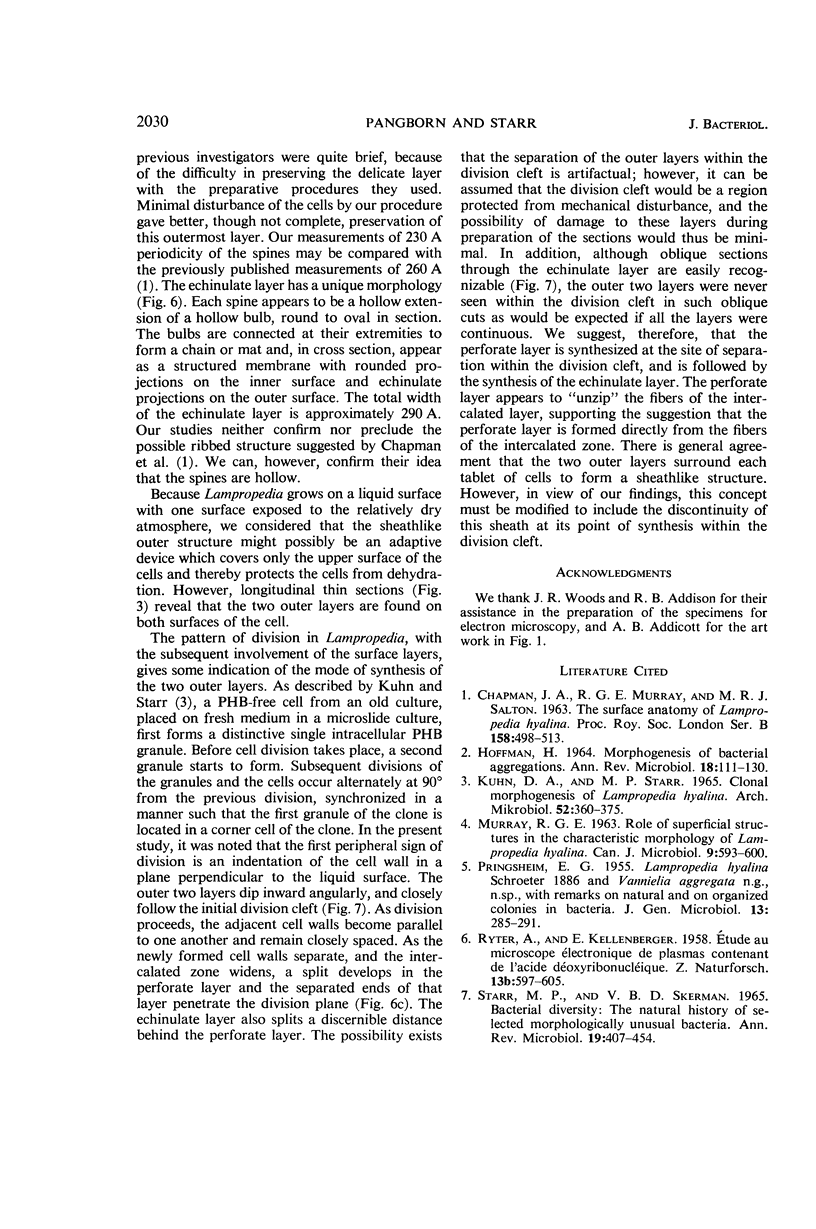
Images in this article
Selected References
These references are in PubMed. This may not be the complete list of references from this article.
- CHAPMAN J. A., MURRAY R. G., SALTON M. R. THE SURFACE ANATOMY OF LAMPROPEDIA HYALINA. Proc R Soc Lond B Biol Sci. 1963 Nov 19;158:498–513. doi: 10.1098/rspb.1963.0060. [DOI] [PubMed] [Google Scholar]
- HOFFMAN H. MORPHOGENESIS OF BACTERIAL AGGREGATIONS. Annu Rev Microbiol. 1964;18:111–130. doi: 10.1146/annurev.mi.18.100164.000551. [DOI] [PubMed] [Google Scholar]
- Kuhn D. A., Starr M. P. Clonal morphogenesis of Lampropedia hyalina. Arch Mikrobiol. 1965 Dec 7;52(4):360–375. doi: 10.1007/BF00419275. [DOI] [PubMed] [Google Scholar]
- PRINGSHEIM E. G. Lampropedia hyalina Schroeter 1886 and Vannielia aggregata n.g., n.sp., with remarks on natural and on organized colonies in bacteria. J Gen Microbiol. 1955 Oct;13(2):285–291. doi: 10.1099/00221287-13-2-285. [DOI] [PubMed] [Google Scholar]
- RYTER A., KELLENBERGER E., BIRCHANDERSEN A., MAALOE O. Etude au microscope électronique de plasmas contenant de l'acide désoxyribonucliéique. I. Les nucléoides des bactéries en croissance active. Z Naturforsch B. 1958 Sep;13B(9):597–605. [PubMed] [Google Scholar]
- Starr M. P., Skerman V. B. Bacterial diversity: the natural history of selected morphologically unusual bacteria. Annu Rev Microbiol. 1965;19:407–454. doi: 10.1146/annurev.mi.19.100165.002203. [DOI] [PubMed] [Google Scholar]




